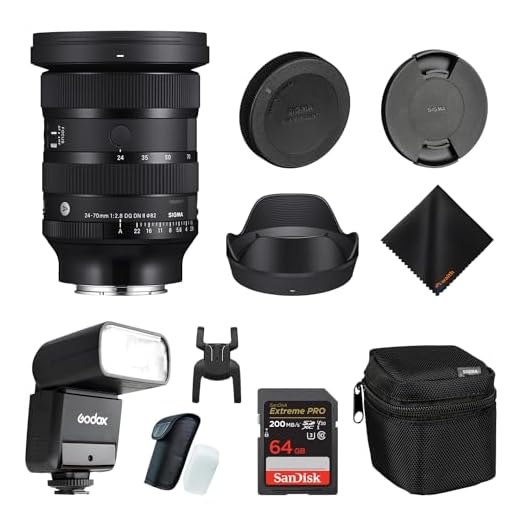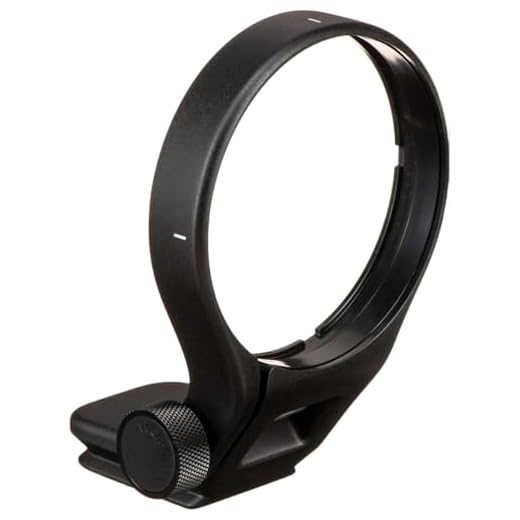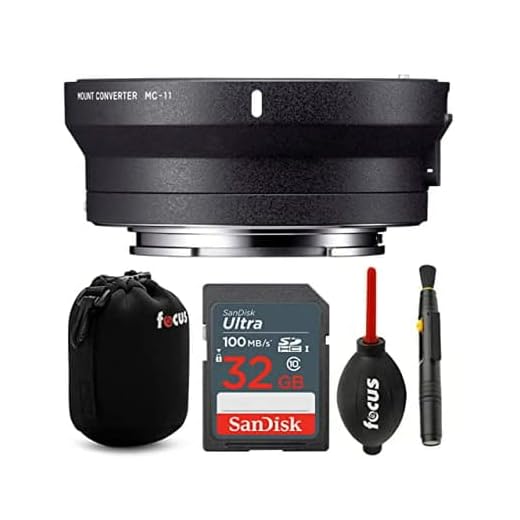

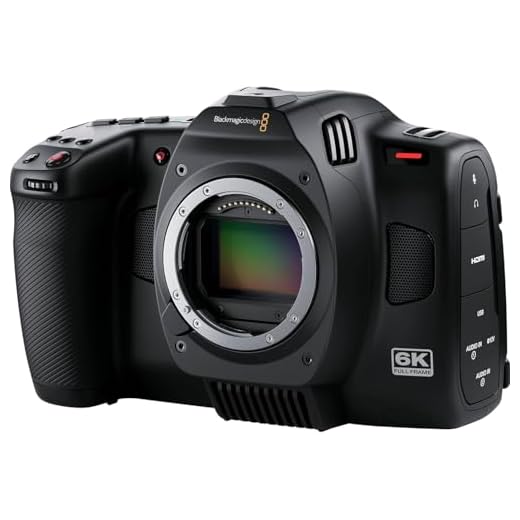
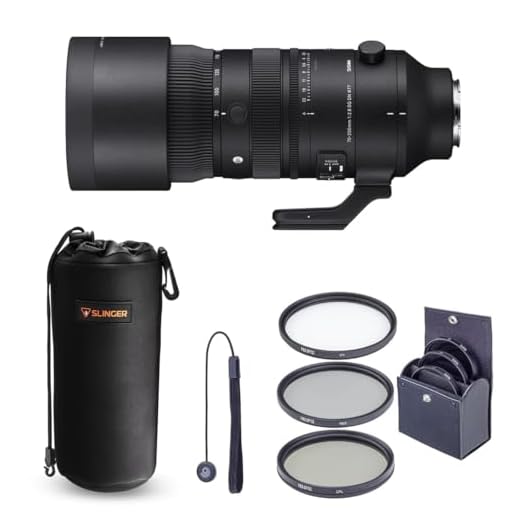
If you’re considering the compatibility of various optics with your larger sensor system, I advise you to check the specific mount types first. Not every piece of glass is engineered for use with higher-end platforms. It’s crucial to verify if the optical design aligns with the sensor’s dimensions and characteristics.
Most offerings have distinct models catering to different mounts, meaning you may encounter limitations regarding compatibility. For those who are keen on macro, wide-angle, or telephoto photography, be sure to look up the specifications to understand the crop factors and image circle of each model.
For optimum performance, it’s wise to focus on optics designed explicitly for larger sensors. Even within a particular brand, variations exist, so meticulous research on each piece of equipment remains paramount. Checking user reviews and expert tests can further clarify which options deliver the best results for your needs.
Do All Sigma Lenses Fit on Full Frame Cameras?
Not every optical attachment from this manufacturer is compatible with larger sensor systems. It’s crucial to identify which models suit your device’s specifications. Here are some key points to consider:
- Check the model designation: Look for terms like “DG,” which indicates compatibility with larger sensors.
- Look into crop sensor variants: Certain designs are tailored for smaller formats and will cause vignetting or other issues on larger bodies.
- Mount type matters: Ensure that the optical device matches the mounting system of your apparatus (e.g., Canon EF, Nikon F, Sony E).
Testing Compatibility
I recommend reviewing the manufacturer’s official website for detailed information on each model. Additionally, consult user reviews and photography forums to gather real-world experiences.
Alternatives and Adaptations
If you own a model not designed for larger formats, consider using an adapter. However, be aware that this might affect performance and functionality. Always test before committing to any major purchase.
Understanding Lens Mount Compatibility
To ensure compatibility between various optics and your device, it is crucial to consider the mount type. Each type of optical attachment features distinct specifications that affect how components interact. Here’s what I focus on when assessing compatibility:
Mount Types
- Check for the specific mount type: Canon EF, Nikon F, Sony E, and others have unique attachments.
- Verify if there are adapters available if the native mount doesn’t match.
- Remember that some mounts like Micro Four Thirds have tighter compatibility than others.
Crop vs. Full Sensor Sizes
- Understand that designs intended for smaller sensors may work on larger systems, but with limitations.
- Investigate whether vignetting or focus issues may arise when using optics not designed for full sensors.
- Note that inherent characteristics might affect performance differently depending on sensor size.
Randomly mixing optics and mounts without checking compatibility could lead to subpar performance or even damage. Always consult the manufacturer’s guidelines for specifics on your selected attachment. An informed choice ensures that you get the best out of your camera and optics setup.
Assessing Sigma Lens Types for Full Frame Use
Primarily, I recommend checking if a model is designed for larger sensor systems by identifying the mount type. Lenses noted as being compatible with L mounts or E mounts usually accommodate high-end setups. These optics are engineered to deliver extensive image quality across various applications.
Different Types of Lenses
Understanding the classifications helps in making informed decisions. Here are some prevalent categories:
| Category | Description |
|---|---|
| Wide-Angle | Ideal for capturing expansive scenes and architecture, featuring short focal lengths. |
| Standard | These optics provide a natural perspective, commonly covering a focal range of around 50mm. |
| Telephoto | Useful for distant subjects, telephoto types excel in wildlife or sports photography. |
| Macro | Specialized for close-up photography, allowing intricate details to be sharply rendered. |
Mount Compatibility Checklist
Here are a few steps to assess compatibility:
- Identify the mount type of your existing equipment.
- Refer to product specifications listed by the manufacturer.
- Consult user reviews and community forums for potential experiences.
Each model may have unique characteristics influencing their performance on larger sensor systems. It’s prudent to investigate thoroughly before any purchase.
Identifying Sigma Lenses with Canon EF Mount
To determine compatibility with the Canon EF mount, check for specific markings on the barrel. Look for the “EF” designation on the lens, which indicates that it connects to Canon’s full-frame system. Additionally, the presence of the “Canon” logo or “EOS” label is a positive sign of compatibility.
Key Characteristics
Here are some features to verify when identifying optical devices designed for the Canon EF mount:
| Feature | Description |
|---|---|
| Mount Type | Confirm the lens has a Canon EF mount versus other mounts like EF-S or RF. |
| Focal Length | Note the focal lengths; most full-sized units offer longer options suitable for a variety of shoots. |
| Autofocus Mechanism | Models that include “HSM” (Hyper Sonic Motor) generally provide fast and quiet focusing, compatible with Canon systems. |
Product Listings and Reviews
When shopping, consult reputable product listings and reviews specifically mentioning Canon compatibility. User experiences can be invaluable in clarifying any nuances related to functionality and performance with Canon bodies.
Evaluating Sigma Lenses for Nikon F Mount
In assessing compatibility with Nikon’s F mount, I find it essential to note that many optical products designed for this bayonet fit seamlessly. Nikon’s extensive lens lineup, along with models from third-party manufacturers, allows versatility in attachment. However, some offerings from this brand require careful consideration to ensure they operate without issues on Nikon bodies.
Key Features to Consider
When examining specific options, factor in the autofocus (AF) capabilities. Not every model provides reliable AF functionality on Nikon cameras, especially older variants. Abundant selection exists, but verifying whether the specific mount version meets your camera’s requirements is imperative.
Latest Additions and Firmware Updates
Periodic firmware enhancements can significantly enhance performance with Nikon equipment. Always check the official website for updates aimed at improving compatibility or fixing bugs. This practice can prevent potential operational hurdles and enhance shooting experiences.
Exploring Sigma Lenses with Sony E Mount
For anyone utilizing Sony’s E mount system, a variety of options from the brand are available, ensuring compatibility with various types of photography. The compatibility with different models largely hinges on their design specifications. Below are key insights for navigating this selection.
Compatible Options
- Full-frame models like the 35mm f/1.4 and the 24-70mm f/2.8 provide high performance across multiple scenarios.
- APS-C specific variants, such as the 16mm f/1.4 and the 18-50mm f/2.8, are designed for optimal use within crop factor parameters.
- Many of these optics feature the versatile and performant autofocus system, which complements Sony bodies effectively.
Key Considerations
Before making a selection, consider the intended use:
- Assess focal length requirements based on your photography style. Wider angles may benefit from 14mm or 16mm options, while portrait work can leverage 85mm or 135mm.
- Evaluate aperture size for low-light performance and depth of field control; higher apertures (such as f/1.4 or f/2.8) facilitate significant subject isolation.
- Make sure to check if the built-in stabilization system aligns well with your camera body’s features for smoother handheld shooting.
In conclusion, an informed approach to evaluating these optical products ensures you can maximize your photographic potential with compatible mounts, capitalizing on their strengths further enhances the creative process.
Compatibility of Sigma Art Series Lenses
When using Art Series optics, it’s crucial to confirm compatibility with your system. The Art lineup, renowned for its exceptional optical quality, is designed for various mounts, including Canon EF, Nikon F, and Sony E. Each of these versions can yield impressive results when paired with their corresponding camera bodies.
Key Models in the Art Series
Several focal lengths in the Art series are particularly noteworthy for professional applications. For instance, the 24mm f/1.4 DG HSM and 35mm f/1.4 DG HSM are prime examples that excel in both low light and general use. The 85mm f/1.4 DG HSM is another strong contender, known for its sharpness and beautiful bokeh.
Firmware Updates and Adaptability
Many in this series support firmware updates through the Sigma USB Dock, enhancing adaptability to newer camera features or correcting issues. Regularly checking for updates can ensure optimal performance and compatibility with new releases within your camera system.
Compatibility of Sigma Contemporary Series Lenses
The Contemporary series is designed to balance performance and portability. These models are highly versatile and can adapt to various shooting environments.
Mount Options
- Canon EF Mount
- Nikon F Mount
- Sony E Mount
For Canon users, most Contemporary options work seamlessly with full-length professional models. Nikon enthusiasts will find select options compatible without any issues. Sony mirrorless users also benefit as compatible variants are readily available.
Key Features Highlighted
- Compact design, ideal for travel and everyday use.
- Fast and accurate autofocus mechanisms.
- High-quality glass elements for sharp images.
When choosing from this series, consider the type of photography you plan to pursue. Whether it’s portraits, landscapes, or street photography, there are choices within this selection that cater to diverse styles. Always double-check compatibility based on your specific model and intended use to ensure optimal performance.
Compatibility of Sigma Sports Series Lenses
The Sports series is designed for professional use, featuring robust build quality and advanced optical performance. For users with varying camera types, understanding the mount compatibility of these products is key.
Mount Options Available
The Sports series includes options for Canon EF, Nikon F, and Sony E mounts. Each mount offers unique features suited for different photographic styles. Here’s a brief summary:
| Mount Type | Camera Compatibility | Notable Lenses |
|---|---|---|
| Canon EF | Compatible with Canon DSLRs and full-frame models | 24-105mm F4, 100-400mm F5-6.3 |
| Nikon F | Compatible with Nikon DSLRs and full-frame models | 20mm F1.4, 120-300mm F2.8 |
| Sony E | Compatible with Sony full-frame and APS-C models | 24-70mm F2.8, 135mm F1.8 |
Performance Insights
For those using high-resolution cameras, choosing a Sports series option often results in minimal optical distortion and superior clarity. This is particularly advantageous for action photography. Be mindful that while these products excel in performance, the weight and size may vary significantly, impacting portability. Always verify that your specific model is compatible with the intended camera body before making a purchase.
How to Check Full Frame Compatibility of a Lens
To determine if a particular optic is suitable for large sensor equipment, I recommend checking a few critical points: the mount type, the image circle, and official specifications.
Firstly, examine the mount. Each system, whether Canon, Nikon, or Sony, has specific compatibility requirements. Confirm that the attachment interface aligns with the body type of your photography device.
Assess the Image Circle
The image circle refers to the projected area of light. For cameras equipped with larger sensors, the image circle must adequately cover the entire sensor. If you can find the technical specifications of the optic, ensure it explicitly mentions coverage for full sensor dimensions. Optics designed for smaller sensors will lead to vignetting or cropped images.
Refer to Manufacturer Guidelines
Consult the manufacturer’s website or product documentation. They often provide compatibility charts or lists detailing which of their products are designed for large sensor systems. This information is usually reliable and should guide your purchase decisions.
Understanding Crop Factor and Its Impact
The crop factor significantly alters the effective focal length of a given optic when used with smaller sensor systems. Typically, this multiplier ranges from 1.5x to 1.6x for APS-C sensors and roughly 2x for Micro Four Thirds. As a result, a 50mm optic on an APS-C format will behave similarly to a 75mm option on full sensor gear.
This aspect can affect composition and the depth of field. For portraiture or wildlife shots, the longer focal equivalent can be desirable, but it may hinder wide-angle captures. I always consider the crop factor before selecting an optic, particularly for specific projects or styles.
Compatibility with various sensors also must factor into my decision. While many modern optics are designed for versatility across formats, older models may require more scrutiny. I ensure to verify specifications, including focal range and intended mount type.
Always keep in mind the visual implications of crop factors. A technique often overlooked is testing different optics to observe how they respond across sensor formats. This hands-on approach not only clarifies performance but enhances my understanding of how to best utilize each tool in my kit.
Lastly, for those transitioning from one sensor size to another, the experience of handling isn’t merely technical–it’s also a creative shift that can lead to new ideas and techniques in photography.
What to Know About Adapter Usage
Using adapters can expand your options when attaching various optical tools to your imaging devices. Here are key points to consider:
- Compatibility: Ensure the adapter matches both the mount of the optical attachment and the device body.
- Functionality: Some adapters maintain electronic communication, allowing autofocus and aperture control. Others may only enable manual functions.
- Performance: Optical quality can be affected, especially with lower-quality adapters. Testing is advisable to assess image quality.
- Crop Factor: Be mindful that using an adapter may introduce a crop factor, altering the effective field of view.
- Stability: Verify that the adapter securely locks into place to avoid the risk of the attachment coming loose during use.
- Firmware Updates: Some manufacturers release firmware updates that improve compatibility with specific setups; regularly check for updates.
- Weight Balance: Adding an adapter can shift the weight distribution, impacting comfort and stability during extended sessions.
Always consult compatibility charts and user reviews for in-depth insights into specific adapters before purchasing.
Manual Focus Options and Compatibility with Full-Frame Systems
Manual focus alternatives can be excellent choices for specific photography styles. It’s crucial to check the mount compatibility before purchasing any of these options to ensure they work seamlessly with your selected body.
When considering a manual focus version, look for mounts associated with your camera brand. For Canon, many vintage options in the EF and FD mounts can be adapted well. Nikon users might find the AI or AI-S types particularly advantageous. For Sony, various M-mount lenses can be adapted effectively, although crop factors should be kept in mind.
Using an adapter can open up access to various manual focus units, expanding creativity. Focus accuracy might shift depending on the quality of the adapter, so opting for reliable brands is recommended.
Finally, remember that working with manual focus requires practice. It’s beneficial to take time adjusting to the nuances of focusing manually, which can bring unique artistic expressions to your photographs.
Autofocus Performance on Full Frame Bodies
When I evaluate autofocus functionality using different mounts on wide-angle and telephoto options, the performance varies. Models designed for Canon’s EF mount typically demonstrate superior speed and accuracy, especially in low-light settings. This pairing allows for effective tracking of moving subjects, making it ideal for action photography.
Nikon F mount variants, while effective, can sometimes exhibit slightly slower autofocus due to the differences in communication between the lens and the camera body. However, with specific models, I found that the performance is adequate for most situations, especially in well-lit conditions.
Performance with Sony E Mount
The autofocus on Sony E mount systems tends to be quite impressive. The hybrid autofocus technology in these bodies utilizes both phase detection and contrast detection, leading to rapid focusing and reliable subject acquisition. I noticed minimal focusing delays with compatible products when shooting in various scenarios.
Optimizing Autofocus Experience
To enhance autofocus efficiency, I recommend keeping firmware updated on both the body and the optics. Regular checks for compatibility issues can prevent frustrating experiences, particularly with third-party options. Using features like continuous autofocus (AF-C) ensures that moving subjects remain sharply in focus during shooting bursts, which is essential for dynamic environments.
Image Quality Considerations for Full Frame Use
To achieve optimal image quality when utilizing wide-format models, it’s critical to consider optical performance across various apertures. Generally, sharpness is maximized within a stop or two from the widest setting. Assessing distortion characteristics is equally important; certain optical designs may exhibit noticeable barrel or pincushion distortion that can affect composition. Checking for chromatic aberration, particularly in high-contrast areas, will ensure cleaner image results.
Vignetting and Light Falloff
Vignetting can significantly alter the visual impact of captured images. Some designs may darken corners more than others, particularly when set to larger apertures. It’s prudent to test and understand how the light falloff behaves at various settings. Use software for potential corrections in post-processing if necessary.
Compatibility with Sensor Resolution
With advancements in sensor resolution, ensuring that optical components provide adequate detail across the entire frame is crucial. Higher megapixel sensors may expose shortcomings in certain designs, revealing softer edges or reduced contrast. Therefore, it’s wise to research reviews and comparisons tailored to specific camera bodies to verify performance against resolution demands.
Understanding Vignetting in Sigma Lenses
When evaluating sharpness and overall image quality, one aspect that often requires attention is vignetting. This phenomenon typically presents as a gradual darkening of the corners compared to the center of the image. It’s particularly noticeable in wide apertures, leading to uneven exposure across an image.
Types of Vignetting
There are several types of vignetting to consider:
| Type | Description |
|---|---|
| Natural Vignetting | Occurs due to the optical design of the lens, with light rays at the periphery being less intense. |
| Mechanical Vignetting | Results from obstructions like lens hoods or filters, blocking light at the edges. |
| Post-Processing Vignetting | Artificially added during editing to create a specific aesthetic. |
Managing Vignetting
To mitigate vignetting, consider adjusting your aperture. Stopping down can often lead to a more uniform exposure. Additionally, reviewing the an individual’s reviews for specific glass can provide insights into how much vignetting to expect at various focal lengths and apertures.
In some cases, software tools are available that allow for correction of vignetting in post-production. Many photo editing applications include profiles for specific optics, automating corrections based on known characteristics.
How to Adapt Sigma Lenses to Different Systems
When looking to connect these optics with various camera systems, I recommend first identifying the mount type of the specific model. Adapters are widely available, facilitating use across different brands.
Understanding Mount Adapters
Utilizing a mount adapter can bridge the compatibility gap between your chosen objective and the desired body. It’s crucial to choose a high-quality adapter that maintains electronic communication for autofocus functionality. Manual focus may be an option with simpler adapters but can vary in performance.
Performance Considerations
Before committing to an adapter, I evaluate potential autofocus speed and accuracy. Some combinations may introduce lag or inaccuracies. Additionally, I assess how the adapter affects image quality, particularly in terms of sharpness and vignetting. Reading user reviews on the specific configurations I plan to use helps gauge potential results.
Finally, I ensure that firmware updates are accessible for the adapter, as manufacturers often release enhancements improving compatibility and functionality.
Best Practices for Using Sigma Lenses on Full Frame Cameras
Ensure compatibility by verifying the lens mount type before attaching it to your camera. Refer to manufacturer specifications for detailed information.
Utilize a tripod or stabilizer for enhanced stability, especially with longer focal lengths. This reduces the risk of camera shake, ensuring sharper images.
When shooting in low-light settings, consider adjusting your ISO settings to maximize performance. Shooting with a higher ISO can help mitigate potential softness or distortion.
Experiment with aperture settings. Wide apertures may produce a lovely bokeh effect but can also highlight imperfections. Conduct tests to find the sweet spot for your specific setup.
Regularly clean the rear elements of the optic and the camera’s sensor to prevent dust from impacting image quality. A clean environment helps maintain optimal functionality.
For optimal autofocus capabilities, update your camera’s firmware regularly. This ensures compatibility with the latest technology within the lens.
Take note of potential vignetting when using certain models, especially at wider apertures. It’s advisable to review image corners for uniform brightness and make adjustments as necessary in post-processing.
Consider using manual focus for macro or low-light scenarios. This can provide more precision than relying solely on autofocus.
When adapting to different systems, ensure that the adapter supports electronic communication if functionality of features like autofocus is required. Research specific adapters that may enhance performance.
Keep in mind the crop factor that affects focal lengths when using in tandem with cameras featuring smaller sensors. Understand how this impacts your composition and shot selection.
Familiarize yourself with the specific characteristics of different series such as Art, Contemporary, and Sports. Each series offers unique attributes that can enhance your photography experience.
Always refer to user manuals and online resources for guidance on leveraging advanced features of your optics, maximizing the quality of your imagery.
Common Issues with Lens Compatibility
Compatibility challenges often arise with specific optics on different camera systems. One primary concern is the lens mount design. Variations among brands can lead to physical mounting issues, where a product cannot be attached to certain bodies without an adapter.
Electronic communication discrepancies can also impact functionality. Some modern optics include advanced autofocus and stabilization systems that may not operate effectively with older camera models or different mounts. This can result in a lack of autofocus or other features, degrading the user experience.
Vignetting and Distortion
Another area to examine is image quality. Using optics designed for smaller sensors on larger formats may lead to significant vignetting and distortion. This occurs when the edges of the frame are less illuminated or display noticeable aberrations. It’s best to consult reviews or performance tests specific to your situation.
Manual Focus Lag
Manual focus options can pose their own set of difficulties. Without autofocus, achieving sharp images becomes more complex, especially in dynamic environments. Understanding the focusing distance and depth of field is crucial for success with manual models.
Proactive awareness of these compatibility issues can aid in achieving better results with your photography setup.
Firmware Updates for Enhanced Compatibility
Ensure your experience with various optics is seamless by performing firmware updates on your camera body. Compatibility issues can often be resolved through these updates, which are regularly released by manufacturers to improve functionality and support new models of interchangeable optics.
For improved interaction between your optical devices and the imaging sensors, follow these guidelines:
- Visit the official websites of your camera manufacturer to check for the latest firmware versions.
- Download and install updates following the provided step-by-step instructions to avoid bricking your device.
- Keep a close eye on release notes accompanying each update; they often detail enhancements specifically related to compatibility with optics.
Maintaining Updated Firmware
Regularly checking for updates will not only enhance the performance of your equipment but may also unlock new features, including advanced autofocus capabilities or improved image stabilization functions. Here’s what to do:
- Schedule periodic checks for both camera and optical device firmware.
- Utilize a compatible memory card to transfer firmware files if necessary.
- Backup your current settings before applying any updates to ensure that you can restore them if needed.
By keeping firmware current, you can minimize compatibility issues while maximizing performance across different systems. This proactive approach leads to optimized imaging results, making your photographic endeavors more rewarding.
Exploring User Experiences with Sigma Lenses
In my exploration of personal accounts, I’ve come across varying opinions regarding the performance of these optics across different setups. Users frequently mention the exceptional clarity and sharpness offered by models from the Art series, with many highlighting their suitability for portrait and landscape photography.
User Feedback on Autofocus and Handling
Several photographers noted that the autofocus speed on mirrorless bodies may lag in certain situations when utilizing specific configurations. However, many found that manual focus worked seamlessly, allowing for precise control during critical shoots. A balance of both focus capabilities seems to enhance user satisfaction across various scenarios.
Conversations Around Build Quality
The build quality consistently stands out in reviews. Photographers appreciate the robust construction which provides a sense of durability. Users have shared experiences of using these tools in challenging environments, affirming that they withstand considerable wear and tear while maintaining performance. This factor contributes significantly to the overall user satisfaction and encourages a strong reputation within the photography community.
Comparing Sigma Lenses to Other Brands
When evaluating options, I find Sigma offers remarkable versatility compared to various other manufacturers. Each brand has its unique strengths and limitations, which are critical to consider based on intended usage.
Image Quality Assessment
A key aspect setting Sigma apart is its commitment to optical excellence. The Art series, for instance, often rivals premium models from Canon and Nikon in sharpness and color rendition. Prime lenses from Sigma typically perform exceptionally well in low-light conditions, a feature that aligns closely with what’s available from Zeiss.
Build and Design
In the realm of construction quality, Sigma’s build is frequently noted for its robustness. While the Contemporary line provides a lightweight option, brands like Tamron and Tokina may not offer the same level of durability across their lineup. In contrast, while Sony’s native optics are often styled with a modern aesthetic, Sigma’s offerings remain practical and functional without compromising on design quality.
| Brand | Optical Quality | Build Quality | Price Range |
|---|---|---|---|
| Sigma | Excellent, especially Art series | Robust, varies by series | Mid to High |
| Canon | Top-tier, consistent | Durable, reliable | High |
| Nikon | Similar to Canon, very good | Solid, long-lasting | High |
| Tamron | Good, improving | Average | Budget to Mid |
| Zeiss | Outstanding, premium optics | Premium | High |
Future adaptability is another frontier where I see potential. The ability to mount and use with different platforms is critical, and Sigma generally allows for this flexibility better than many competitors, ensuring my investment remains valuable over time.
Resources for Sigma Lens Compatibility Queries
For precise information regarding lens compatibility, consult the manufacturer’s official website or product documentation. Here are some reliable resources:
- Sigma Official Website – Provides detailed specifications and compatibility charts.
- Sigma Support Page – Access FAQs and customer support for specific inquiries.
- DPReview – Offers expert reviews and comparisons, often discussing compatibility in depth.
- B&H Photo Video – Great resource for user reviews and compatibility concerns based on real-world use.
- YouTube Reviews – Video demonstrations can often showcase practical compatibility scenarios.
Community forums like Photography Review and Reddit Photography can also provide insights from fellow users. Engaging in discussions can yield personal experiences that reveal any nuances regarding usage.
For additional technical details and firmware updates, visiting the manufacturers’ specific product pages is beneficial. Staying informed through these channels will enhance understanding of compatibility across various mounts and systems.


